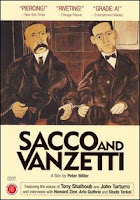With the closing of year two of the
TAH Grant, I thought that I would reflect on some of the tools and techniques I’
ve gained from the grant, and how they’
ve improved my teaching of American history at the high school level.
I am a tremendous fan of the
TAH Grant. I have gained extremely useful teaching skills, enriched my breadth of knowledge of American history, and incorporated these
new found skills into almost every day of my teaching.
In an earlier blog, I wrote about my use of a series of primary sources, which are published by the Teaching American History Professional Development Project, a Partnership of the Fall River Public Schools and Bristol Community College. This collection still is a part of my teaching at least twice a week. With them, I’
ve been able to give my students the opportunity to explore documents from American history and analyze them.
In a later blog, I took the opportunity to highlight my incorporation of Windows Movie Maker into my high school classroom. This exciting addition to my teaching has greatly improved the research and presentation aspects of my lessons, and my assessment of my students’ learning. With Windows Movie Maker training I was not only able to create movies for my students to view, but more importantly, my students were able to research and create their own movies. If you are interested in movie making with your students please see my earlier blog on the subject or email me a question at
danhanlon@lhs.lowell.k12.ma.us.
This year, we were educated in a simple way to create websites through “
Freshpond.net”. This organization has taken the requirement of learning to become a web designer out of web design. This means that a teacher, with all that we have to do, can create a web page with little effort that is easy to design and navigate.
Using my
Freshpond.net account, I’
ve created a very basic page. In fact I call it my “Basics” page. On it, I’
ve been posting assignments and other class information for my students to use for class. As this system worked well, I succeeded in kicking the page up a notch. Using a secondary skill that I obtained from the grant, I’
ve been taking audio
CDs of our text and “ripping” then into files that can be put on the web. Now, as I give assignments, I can also assign my students to listen to the reading as well. This has been a great help to my students who have
IEPs, and especially useful to my very many bilingual students.
Lastly, but certainly not least, there are the books that I’
ve read and discussed with the book group. Although I haven’t been able to purchase a class set of my favorites, I have used many of the titles in my classes. Mostly, so that the readings match well with what I am covering at the time, I’
ve copied excerpts from chapters and made them available to the class. Because the writing of these books is of high quality, and the writing perspective is different from both our textbook and primary sources, students have found them a refreshing, informative and interesting assignment. Interestingly, I’
ve found that following an assigned excerpt from one of these titles; my classes have much more lively and thoughtful class discussions. Proving when everyone enjoys what they have read, they learn a great deal, and become anxious to share what they’
ve learned.
In all, the
TAH grant has given me many tools to expand my breadth of knowledge in American history, produce intriguing lessons, and provide my students with primary sources that are succinct and approachable. I am greatly looking forward to participating in the grant next year.







